Listing sponsored by
KappaElastin™
Scientific
Breakthrough. No Shots
Science response to skin aging.
www.kappaelastin.com
Field Museum, the
Roosevelt Road at Lake Shore Drive
Chicago, IL
Phone: 312 922 9410 - - 1 800 FIELD 54
Tty: 312 341 9299

The Field Museum
Aerial view of The Field Museum by Chicago's beautiful lakefront.
The exterior of the museum is closely patterned after the Erechtheium, one
of the Athenian Acropolis temples.
The Field Museum's present structure was
designed by Daniel Burnham
Statement of Purpose
The Field Museum is an educational institution concerned with the diversity
and relationships in nature and among cultures. It provides collection-based
research and learning for greater public understanding and appreciation of
the world in which we live. Its collection, public learning programs, and
research are inseparably linked to serve a diverse public of varied ages,
background and knowledge.
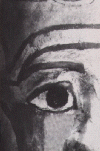
Ancient Beauty.
You can travel the globe to discover some of the most interesting cultures,
environments, and animals of our ever-changing planet in over 9 acres of
exciting exhibitions drawn from over 20 million artifacts and specimens.
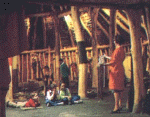
Learning about other cultures.
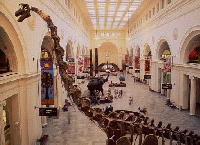
Stanley Field Hall
The highlights of the Hall are: the Brachiosaurus; the fighting African Bull
Elephants; two towering Northwest Coast Indian totem poles; 12 colorful banners
by Canadian artist Norman Laliberte'; and a huge globe, six feet in diameter.
Highlights & Collections
The Field Museum originated at the World's Columbian Exposition of 1893,
which was held in Chicago's Jackson Park. Daniel Burnham, the supervising
architect of the Exposition and the author of Chicago's lakefront plan, was
hired to build a new home for the Museum. On May 3, 1921, the new Field Museum,
after consuming twenty years of planning and $7 million in private funds,
opened its doors to the public at its present location, at Roosevelt Road
at Lake Shore Drive.
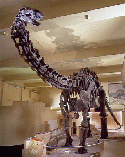
Apatosaurus
The Field Museum's Apatosaurus is one of the largest land animals ever
discovered.
It lived in the Western part of North America 152 million years ago during
the late Jurassic period. Field Museum paleontologist Elmer S. Riggs discovered
this Apatosa
And, if you are looking for the real thing, you're in the right place. At
The Field Museum, you'll meet creatures from a prehistoric age, unwrap the
secrets of ancient Egyptian mummies, come eye to eye with Bushman, the African
gorilla who became a legend, and see Brachiosaurus, the world's largest mounted
dinosaur. In "Life Over Time" you'll be surrounded by dinosaurs as you explore
the evolution of life on Earth from the beginning of time through the evolution
of humans - an exhibit 3.8 billion years in the making! Don't miss your chance
to walk on the wild side when you meet the cunning, man-eating lions of Tsavo,
Kenya, the real-life inspiration for the movie, "The Ghost and the Darkness".
Real adventure awaits everyone who visits The Field Museum.

Paleozoic Seas
Visitors explore the recreated 600 milliion year old Paleozoic undersea
environment in the First Animals of Life Over Time.
In this aquatic environment visitors can view a diorama depicting the shallow
ocean floor.
Combining the fields of Anthropology, Botany, Geology, Paleontology and Zoology,
the Museum uses an interdisciplinary approach to increasing knowledge about
the past, present and future of the physical earth, its plants, animals,
people, and their cultures. In doing so, it seeks to uncover the extent and
character of biological and cultural diversity, similarities and
interdependencies so that we may better understand, respect, and celebrate
nature and other people.
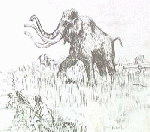
Mummy Mask.
This elaborately painted and gilded cartonnage mask made of linen and coated
with plaster was placed over a mummified child.
This child shared a coffin with a child of a similar age, presumably a twin.

Oases
Young visitors discover the complexity of a desert ecosystem from water sources
and oases to caravan merchant routes crisscrossing the 3.5 million square-mile
Sahara.
Africa, a $4 million permanent exhibit, offers an encompassing view
of Africa.
Exhibits & Special Events
MAN-EATING LIONS of TSAVO ON DISPLAY AT THE FIELD MUSEUM

Tsavo Lions
Looking as if they are on the prowl, this pair of man-eating lions is on
display at The Field Museum.
Paramount Pictures released "The Ghost and the Darkness," a major motion
picture which recounts the terrifying and true tale of the lions of Tsavo
(SAH-vo) -- two of the most vicious man-eaters of all time. While theatergoers
can see the lion stand-ins, visitors to The Field Museum can see the real
thing -- the lions of Tsavo, themselves.
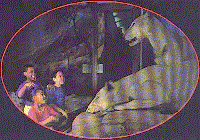
Lions of Tsavo
Starring Michael Douglas and Val Kilmer, the film's story begins in 1898,
when the British started building a railway bridge over the Tsavo River in
East Africa. Over the next nine months, two large, male lions killed and
ate nearly 140 railway workers. Despite efforts to repel the attack, the
lions continued to terrorize the work camps, halting construction of the
bridge and causing hundreds of workers to flee Tsavo. Lt. Col. John Henry
Patterson (1865-1947), chief engineer on the Tsavo railroad, eventually shot
and killed what came to be known as "devils in lions' shape."
It remains a mystery to this day why the Tsavo lions became man-eaters, but
two factors stand as probable causes. In the 1890s, an outbreak of rinderpest
disease killed millions of zebras, gazelles and other African wildlife. Lions
had to look elsewhere for food, and attacks on humans increased across Africa.
Poor burial practices may also have contributed to the tragedy, as railway
workers who died of injury or disease were often poorly buried or not buried
at all. A lion coming across such an easy meal might develop a taste for
live humans.
Upon completion of the railroad, Patterson became chief game warden in Kenya
and later served with the British Army in World War I. He lectured widely
on his adventures and published four books. After speaking at The Field Museum
in 1924, Patterson sold the lion skins and skulls to Stanley Field for the
then-sizable sum of $5,000. Museum taxidermist Julius Friesser did an
extraordinary job creating the life-like mounts of the lions which continue
to be a proud part of the Museum's collection.
The Tsavo lions are located on the first floor of the
west wing in the Rice Wildlife Research Station. Viewing is free along with
regular Field Museum admission; $5 for adults, $3 for children (3-17), seniors
and students with an ID. Museum visitors will receive $1 off regular Museum
admission when presenting a ticket stub from "The Ghost and the Darkness." The
Field Museum is located on Roosevelt Road at Lake Shore Drive. Low cost parking
is available.
Hours:
Open 9 a.m. to 5 p.m. daily, except Thanksgiving, Christmas, and New Year's
Day.
Admission & Directions:
-
$7 adults
-
$4 children 3 - 17, seniors, students with ID
-
Wednesdays are free
The Museum is located on beautiful Lake Michigan and Roosevelt Road, just
south of Chicago's downtown Loop area and within walking distance to downtown
hotels and shops. CTA buses #6, #10, #130 and #146 all stop at the Museum.
Parking is available just south of the Museum at Soldier Field. Metered parking
is available on McFetridge Drive, in front of the Museum's south entrance.
Key Personnel:
John W. McCarter, Jr., President
Tell us what you think.
Would you like to e-mail any
request to the museum?
Do you wish to receive some information on how to get your museum on
the Artcom Museums Tour?
Thank you again for your visit.
This page and all contents are © 1995-2014 Art Emotion Corp., IL. USA.
All information is subject to change - This document is non contractual.









